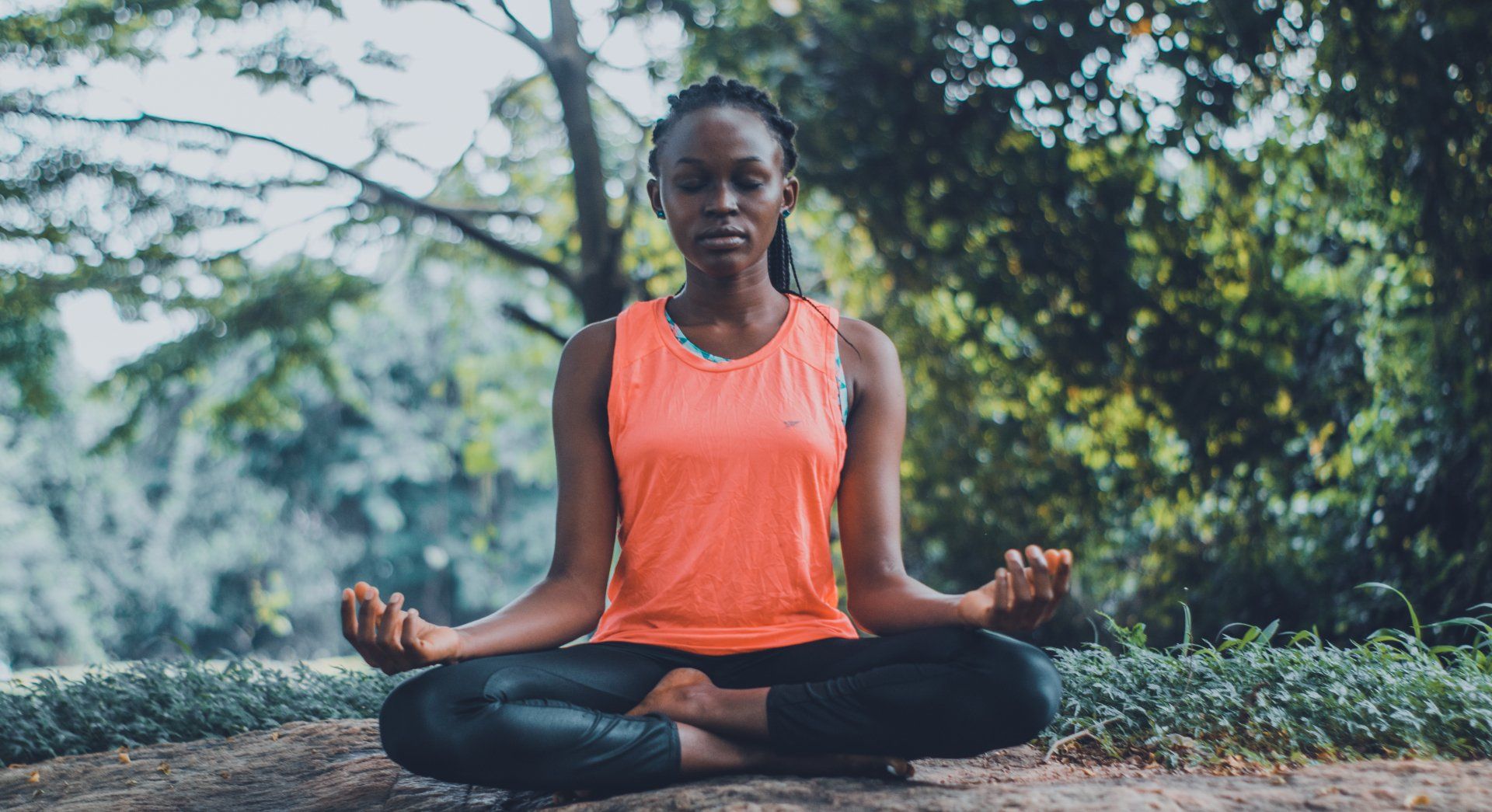How to Improve Yourself
Perhaps you want to learn new things, replace bad habits, become more productive, find emotional balance, or improve your relationships?
Whatever it is, we’ve put together this guide to help. It features 20 practical self-improvement ideas that you can use to develop yourself.
But remember, developing yourself takes time and dedication, so be kind to yourself.
It’s not easy to rewire our habits, change our perceptions, and learn new things. We also need to find the courage to step into the emotional discomfort that arises when we move beyond our comfort zones.
1. Take an Online Course
Taking an online course is a great way to learn new skills, expand your mindset, and improve yourself. Whether you want to learn digital marketing, photography, or programming, there are so many amazing free online courses.
2. Learn a Language
Learning a new language is a great way to work on yourself, explore a different culture, and change your way of looking at the world. Plus, learning a new language can open up new travel possibilities and introduce you to many new potential friends.
If that’s not enough, you’ll also get the perfect opportunity to practice valuable life skills, such as patience, perseverance, dedication, and hard work.
3. Learn to Play a Musical Instrument
Just like languages, music can open you up to a whole new world. Learning an instrument can be a fantastic way to join a dedicated community, find a healthy method of emotional expression, and develop a life-long passion.
So, if you’ve always wanted to play a musical instrument, there’s no time like the present! Plus, there are tons of free tutorials online to get you started.
4. Start a Business
Starting a business can provide many of the same benefits of learning a language or instrument. However, there’s a bonus benefit: you can also make money.
There are many different types of businesses you can start such as freelancing, consulting, and teaching online.
5. Read More
Do you wish you spent less time on social media, YouTube, or Netflix? Reading is a great alternative. Many of the most successful people in the world value reading as a way to improve themselves every day.
6. Stick to an Exercise Routine
There’s a reason why successful people exercise regularly. It boosts our immune systems, gives us more energy, and can regulate our hormones and emotions, which helps us stay focused and motivated.. If you want to begin exercising regularly, consider downloading an exercise app, working out with a friend, or setting a daily goal, no matter how small.
7. Eat Healthier
With so many unhealthy options out there, it can be challenging to eat healthily.
However, our diets have a massive impact on our happiness, wellbeing, and success. What we consume can heal us or hurt us. There’s an Indian ayurveda proverb that says, “When diet is wrong, medicine is of no use. When diet is correct, medicine is of no need.”
When trying to change a bad habit, start small, and focus on consistency. For example, you could start by eating at least three types of fresh fruit and vegetables every day.
8. Watch and Listen to Positive Media
The saying, “you are what you eat,” also applies to everything we consume, such as the things we listen to and watch. Every podcast, movie, and social media post that we consume impacts our mental and emotional states. In fact, a new study has proven that social media causes negative effects on wellbeing, and increases feelings of depression and loneliness.
Eek. Consider your media habits. Is there anything that you regularly consume that could be harming your mental or emotional health?
9. Learn to Rest Deeply
These days, there’s so much to do: Work, study, read books, watch TV, listen to podcasts, catch up on social media, message friends, run errands, clean, travel, shop, cook, exercise…
It never stops, right?
Here’s the thing: Sometimes, we just need to do nothing – literally, “no-thing.” The writer and meditation teacher Sylvia Boorstein wrote, “Don’t just do something, sit there!” So, try to sit quietly, watch the sunset, and spend time in nature with your wonderful self. Just be.
This can feel incredibly uncomfortable at first. However, learning to be with yourself without distractions is an essential part of meaningful self-development.
10. Start Meditating
According to some reputable scientific studies, meditation can help to:
- Reduce stress and anxiety
- Promote emotional health
- Enhance self-awareness
- Lengthen attention span
- Reduce age-related memory loss
- Generate kindness
- Help fight addictions
- Improve sleep
- Control pain
Sold? Awesome!
There are countless meditation teachers out there, such as Tara Brach and Joseph Goldstein. You could also check out meditation apps, such as Headspace.
11. Plan Your Goals Then Schedule Time to Work on Them
French writer and pioneering aviator, Antoine de Saint-Exupéry, once said, “A goal without a plan is just a wish.” In other words, turn your wishes into goals by creating a plan and scheduling time to work on them. To-do list apps can help.
12. Start Journaling
Journaling provides many health benefits. Research shows that expressing your thoughts and feelings in this way can:
- Decrease the symptoms of asthma, arthritis, and other health conditions
- Improve cognitive functioning
- Strengthen the immune system
- Counteract many of the negative effects of stress
It’s also a great way to stay focused on your goals and increase your feelings of gratitude and happiness.
13. Start a 30-Day Challenge
The software engineer Matt Cutts said, “If you really want something badly enough, you can do anything for 30 days.” So, is there something you’ve always wanted to learn or do?
Whether it’s starting a business, writing a novel, or exercising every day for 30 days, give it a go. The results may surprise you.
14. Confront Your Fear of Failure
Everyone fears failure to some degree. But as the Businessman George Addair once said, “Everything you’ve ever wanted is on the other side of fear.”
If you want to improve yourself, consider working on overcoming the fear of failure.
To get started, try Noah Kagan’s coffee challenge. This entrepreneur suggests that you walk into a coffee shop and ask for 10% off – for no reason – then wait for a reaction.
Kagan says, “If you go ahead and ask for 10% off coffee, I guarantee that you will learn something about yourself that will surprise you.”
15. Observe Your Emotional Reactions
Our emotions can often overwhelm us and make us behave in ways we’d rather not. That’s why learning to observe your emotions and managing your behavior is a vital part of improving yourself. Doc Lew Childre, an author and the founder of the Heartmath Institute, said, “Learning to ‘just say no’ to emotional reactions isn’t repression. Saying ‘no’ means not engaging the frustration, anger, judgment, or blame. Without engagement, you won’t have anything to repress.” Try sitting for a few minutes each day and just observe how you feel. You could be surprised by what you discover.
16. Develop a Way to Express Yourself
Chris Martin, the singer-songwriter and frontman of the band Coldplay, said, “You’ve got to express yourself in life, and it’s better out than in. What you reveal, you heal.”
How can you express yourself in a healthy way? There are so many ways to express your emotions, such as art, music, writing, and sports. Start developing a healthy outlet.
17. Work with a Licensed Therapist
Let’s face it: Everybody struggles with their emotions sometimes.
And these days, it’s very common for people to work with a therapist to improve themselves. Many successful, respected people like J.K. Rowling, Emma Stone, and Michael Phelps all promote therapy’s benefits.
Working with a licensed therapist is one of the best ways to improve yourself. These trained professionals can provide guidance and support when it comes to navigating your emotions.
18. Identify Ways to Grow Relationships
What relationship habits could you improve? Perhaps you could spend more time with people you care about or listen to them more than you speak?
The journalist Doug Larson once said, “Wisdom is the reward you get for a lifetime of listening when you would have rather talked.”
Once you’ve identified a way to improve your relationship skills, start practicing.
19. Create Ways to Meet New People
One of the best ways to improve yourself is to meet new people.
Not only will this give you a chance to practice your social skills, but you’ll also be exposed to new ways of looking at the world. As the entrepreneur and speaker Jim Rohn said, “You are the average of the five people you spend the most time with.”
Find ways to meet new people that are likely to lift you up and inspire you. For example, if you want to improve your fitness, consider joining a local gym class or yoga studio.
20. Set Your Boundaries
Another great way to work on yourself is to set boundaries in your relationships. Our boundaries (or lack of boundaries) shape our relationships – and as a result, our lives.
The poet Gerard Manley Hopkins said, “Your personal boundaries protect the inner core of your identity and your right to choices.”
Is there something someone always does that you wish they didn’t? How could you compassionately deal with this issue?
“When we fail to set boundaries and hold people accountable, we feel used and mistreated,” said author and psychologist, Brené Brown. “This is why we sometimes attack who they are, which is far more hurtful than addressing a behavior or a choice.”
At Eaton Chiropractic we look at your body and your life as a whole. If you have a friend, family member or coworker who is looking to truly elevate their health have them give the team a call at 770-429-9733 for an initial consultation done at our expense. We are in network with all insurance, including Medicare and Kaiser.
SHARE THIS POST:
Leave a Comment:
Recent Articles:






Revitalize Your Health Now!
Take the first step towards a vibrant life. Schedule your consultation today and let Eaton Chiropractic transform your well-being. Your journey to health starts here!





